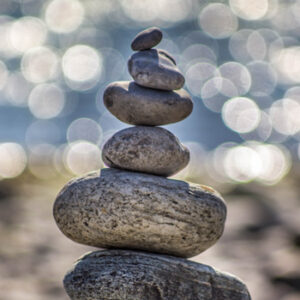
I interviewed a highly respected teacher within the yoga community, Rod Stryker, for Parvati Magazine about how yoga helps create vibrancy within one’s life. The answers were so rich and insightful that I am including the full interview below.
1) Rod, you have been teaching for 35 years and been going back regularly to study with your teachers in India.What is unique about the lineages that you carry forward in your teachings?
It’s hard to speak about what is unique to a tradition just as it would be to describe the uniqueness of a particular kind of honey. Each has its own taste, mineral content, nutritional value, etc. And yet, no matter how clearly one can describe the distinctions, until you taste a particular kind of honey, it is hard to truly understand what makes one unique. In the same way, I would offer that is impossible to truly appreciate the uniqueness of my particular tradition or any tradition until one comes into direct contact with it.
My lineage is Sri Vidya, perhaps the most comprehensive approach to tantra yoga. Yet, within Sri Vidya there are sub-traditions. The best way to convey its uniqueness is that it employs yogic practices like asana, pranayama, bandha, mudra, meditation, and particularly, mantra. Its horizons are vast. It invites us to experience the totality of life, to see and experience the Divine everywhere and to thrive in every aspect of life. It does this initially by helping us to cultivate greater stability and self-reliance, and then gradually helps us to build self-knowledge while at the same time increasing our access to prana or life force. Thus, it is a path of both knowledge and power, rooted in the ancient revelation that life is inherently beautiful-––yes, beautiful, as well as inherently Divine––and that each of us is part of divinity. Finally, it sees the body as the ultimate altar; through it, you can link to the light that is the source of all spiritual traditions and wisdoms. You can exult and ultimately embody the Sacred.
Question 2) I heard your first word as a baby was “light”, and you have dedicated your life to helping others uncover their own light within their hearts. How does the yoga practice contribute to vitality and expansiveness within ones life?
When yoga is practiced holistically, it transforms you at every level. As your mind becomes clearer and more one-pointed, you see the world differently and, most importantly, you understand yourself completely––both the light and dark parts. You then begin the journey of stepping away from those aspects of yourself that are less constructive, and you build your relationship to those parts that are constructive. You begin to collect experiences and thus positive memories of embodying your highest self. In the process, your capacity grows. You are evolving.
If you continue to follow the path, you become increasingly capable of integrating more advanced techniques. Now, the things that used to hinder and obstruct you are diminished and you find greater freedom and joy. You become less at the mercy of circumstances and more the master of your destiny.
3) I love your book “The Four Desires”. It gives concrete and engaging steps for someone to uncover their purpose and live the life they dream of. How does the physical practice of yoga play in guiding one to accomplish this?
Yoga can, but doesn’t necessarily enable you to still your distractions and access a deeper core of understanding and self-awareness. In short, the aim of yoga is to enable you to bring meaning and purpose to your life when you are not actually doing yoga. In other words, practice in order to be clear enough and conscious enough to make the best choices that eventually allow you to fulfill the purpose of your life. But even if you do yoga and practice a yoga that is truly healing, transformative and empowering, you still need to ask yourself life’s most essential questions: “What is the purpose of my life?” “What is my life’s meaning?” That is why I wrote The Four Desires––to help yoga practitioners and non-practitioners arrive at the answers that are essential for us to know in order to fulfill our reason for being here.
4) You started “ParaYoga” and say practice of yoga, pranayama and meditation are key to unlocking one’s full potential by unlocking blocks that are keeping one from joy and freedom. What is unique in Para yoga’s school of guidance to achieve this?
ParaYoga is a complete and holistic system rooted in tradition and the living transmission of teacher to student, drawing upon the full spectrum of methodologies, from asana to meditation, from mudra and bandha to kriya, self-inquiry exercises as well as the profound methods of yoga nidra. There are not a lot of yoga schools today that enable practitioners to draw upon this vast array of modalities in an integrated way and ultimately allow them to individualize their practice based on their specific needs. ParaYoga’s focus is to give people the experience of the potential of yoga practice as well as provide them the tools to understand how and what to practice to maximize its effectiveness so that they thrive and become more masterful in all aspects of life.
5) Many people struggle with confidence and fears that keep them from pursuing their dreams. What 3 pieces of advice do you have for people to face their fears, and unleash their inner fire and light, moving towards freedom of being and doing what brings them the greatest joy?
First of all, become more stable. The signs that your practice is providing stability is that you become less dependent on circumstances for happiness. Thus, you remain calm in the midst of turbulence, certain in the midst of uncertainty and mindful, or able to easily access the sense, that there is always a part of you that is free. Second, understand yourself. Be clear, practice to become absolutely clear that your happiness is not dependent on the world. You are inherently content, needing nothing or no one to be content and yet you have an unique purpose and mission in this life––to be fully yourself. Third, practice those techniques that bring you closer to your essential nature and that help you tap into your core vitality. Draw courage and strength by knowing yourself and transforming your worldview so that you understand that you are not meant to suffer or be a victim; you are meant to lead with light and positivity and love. These are the qualities that define a “yogi.” And finally, if practice is not giving you or moving you closer to these three things, reexamine your practice because these qualities are what define the outcome of an authentic and complete practice.




